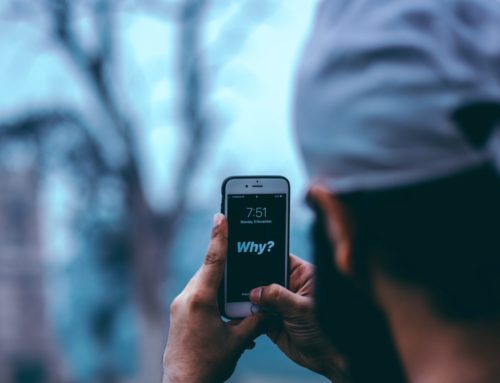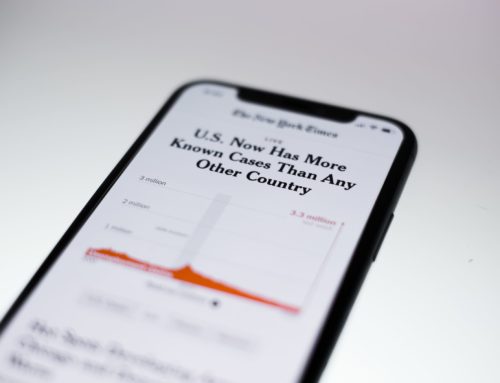Building a Strong Relationship with Yourself
Breana Hall, CI and CT, CTACC
The one person you are guaranteed to spend your life with is you.
This most basic of truths is often overlooked, but can fundamentally improve the quality of your life and work. When you begin to prioritize the care of this one special relationship it enables you to experience more joy, give more of your authentic self, and have a greater mental and emotional stamina in your work as an interpreter and throughout your life. Self-care, at its core, is about actively strengthening this relationship with yourself.
What are the components to building a healthy relationship? Meredith Hansen, psychologist and relationship expert, gives us a framework for creating mutually-fulfilling connections with others. Trust, commitment, and vulnerability are the triad she teaches (qtd in Tartakovsky, 2018). We can borrow this lens, and apply it to the relationship we are building with ourselves, to actively and strategically strengthen it. As we do, our patience with others, sense of self-confidence, and level of self-awareness all increase – allowing us to be more effective practitioners as interpreters, and happier humans overall.
-
Trust
Merriam-Webster defines trust as, “assured reliance on the character, ability, strength or truth of someone or something.” We have an instinctual sense of whether or not we trust someone, but often aren’t clear about how to quantify trust or how to build (or re-build) it. Daniel Turano, Licensed Clinical Social Worker, breaks trust down into this clear and actionable equation:
When our actions align with our words over time, trust increases. When our actions do not match our words, trust is eroded. This simple yet powerful model can provide a guide to building trust within ourselves.
As you work to build trust with yourself, keep in mind these tips:
Start small with your commitments (words) to yourself and others so that you can back them up with action and build trust over time.
- Start small with your commitments (words) to yourself and others so that you can back them up with action and build trust over time. When we declare that we are going to make a large change, life often shows up to highlight obstacles or weaknesses – and we may struggle to accomplish the thing we set out to do. If we can set realistic, doable goals and commitments for ourselves, we will feel empowered by these wins at the same time as actively building trust.
- Keep stretching – reach a bit outside of your comfort zone in order to set and keep your commitments. This sweet spot, just outside your comfort zone but not so far that you induce anxiety and panic, is where learning and growth happens (Senninger, 2000). As you reach to set and keep commitments that are just outside of your comfort zone, your comfort zone will expand and trust will be solidified (Chan, 2014).
-
Commitment
Hansen defines commitment with the idiom, “We’re in this together no matter what” (qtd in Tartakovsky, 2018).This means we don’t abandon ourselves – we speak respectfully about ourselves even when disappointed or frustrated, and we practice seeing “mistakes” as opportunities for learning instead of as failures.
Put commitment into action in your relationship with yourself:
Identify daily practices that keep you nourished, and prioritize them.
- Identify daily practices that keep you nourished, and prioritize them. This may mean quiet time to read, exercise, journal, or express yourself in art or music – whatever activity or non-activity fills you up. Commit to even 5 minutes a day, and follow through to build trust and fill your cup.
- Show up for yourself when life is tough. Just as you want a friend to give their support by listening with patience and empathy – give that same compassion to yourself. Make a list of feelings you’re experiencing, and practice acknowledging your emotions and applying compassion before you move into problem-solving mode.
-
Vulnerability
Vulnerability means “Taking the risk to be your real, genuine self,” Hansen says (qtd in Tartakovsky, 2018). By being honest and open with yourself about how you feel and what you need, you not only feel heard and valued, but you are also able to access more creativity when navigating your way through an issue. As you get to know yourself on a deeper and more authentic level, you start showing up in the world with more truth and authenticity, and everyone benefits.
To practice greater vulnerability in your relationship with yourself, try the following:
As you are honest with yourself about who you are and what you need, you can give others the opportunity to contribute to your well-being by asking for help.
- Identify your intentions and needs when you’re feeling down or frustrated. Often we see our own shortcomings or external circumstances as holding us back in some way. When we are willing to look beyond the immediate injustice or inadequacy, often we find the beating heart of our values and needs. Getting to know your own needs and your responses when those needs aren’t met, without judgement, leads to greater self-awareness.
- Ask for help. Sometimes we put pressure on ourselves to do everything on our own. As you are honest with yourself about who you are and what you need, you can give others the opportunity to contribute to your well-being by asking for help. This builds trust with yourself, as you continue to act with vulnerability and commitment to your own needs, and it begins building trust with others, as you practice sharing your needs and receiving support from others.
As interpreters and as humans, we have a duty to care for this one life we are charged with. We cannot show up for and give to others when we haven’t first laid a solid foundation within ourselves. By focusing on trust, commitment, and vulnerability in your relationship with yourself, you can improve your self-care and deepen that primary relationship. In turn, the self-confidence, patience, and self-awareness you develop can permeate every other interaction.
Resources
Chan, Kenneth. (June 1, 2014). The Learning Zone Model. Retrieved from https://www.slideshare.net/chanbingruikenneth/the-learning-zone-model
Merriam-Webster. (n.d.). Trust. Retrieved April 3, 2019 from https://www.merriam-webster.com/dictionary/trust
Senninger, T. (2000). The Learning Zone Model. http://www.pcfl.com/index_htm_files/The%20Learning%20Zone%20Model.docx
Tartakovsky, Margarita. (July 8, 2018). Three Keys to a Strong Relationship. Psych Central. Retrieved from https://psychcentral.com/blog/3-keys-to-a-strong-relationship/
 Breana Hall, CI and CT, CTACC, holds her CI/CT from RID, B.S. in Interpretation from Western Oregon University and is a Certified Life Coach. She has led thousands of interpreters in preventing burnout and finding the passion again in their lives through developing habits of self-care. Brea is a native of Portland, Oregon, where she can usually be found writing, reading, or playing near water with her partner and kids.
Breana Hall, CI and CT, CTACC, holds her CI/CT from RID, B.S. in Interpretation from Western Oregon University and is a Certified Life Coach. She has led thousands of interpreters in preventing burnout and finding the passion again in their lives through developing habits of self-care. Brea is a native of Portland, Oregon, where she can usually be found writing, reading, or playing near water with her partner and kids.









Leave A Comment
You must be logged in to post a comment.